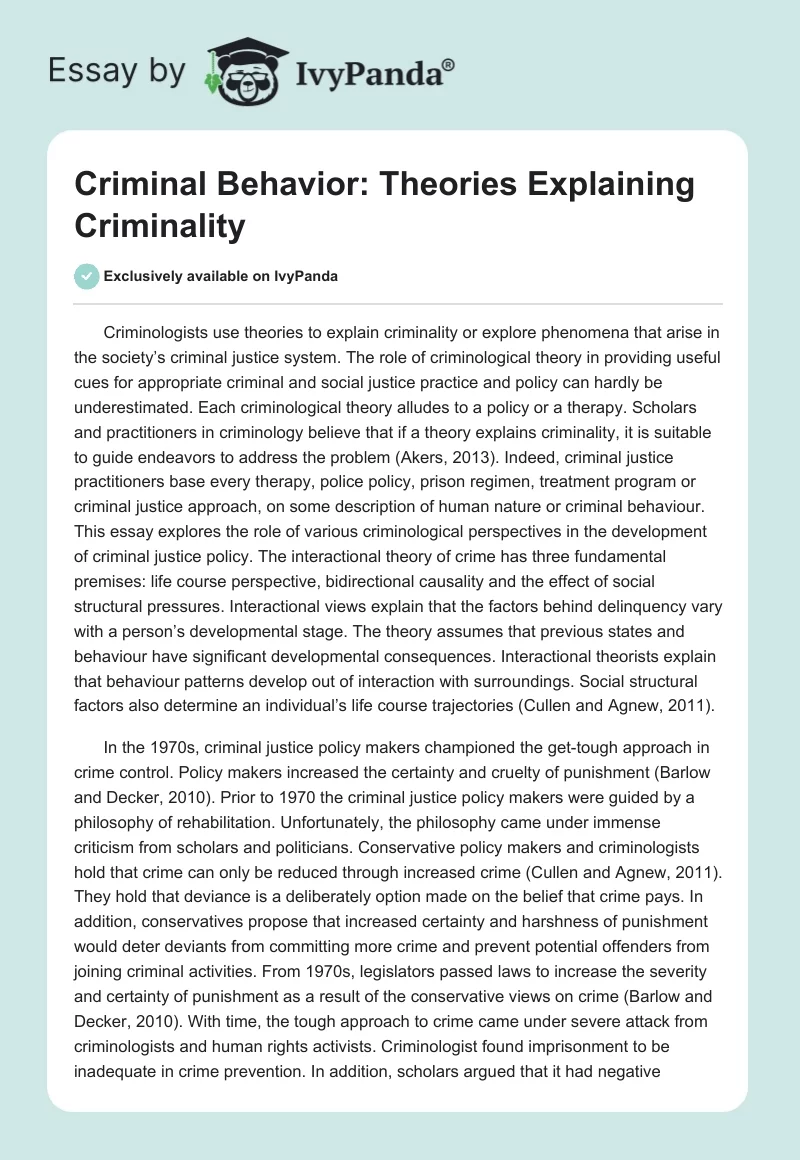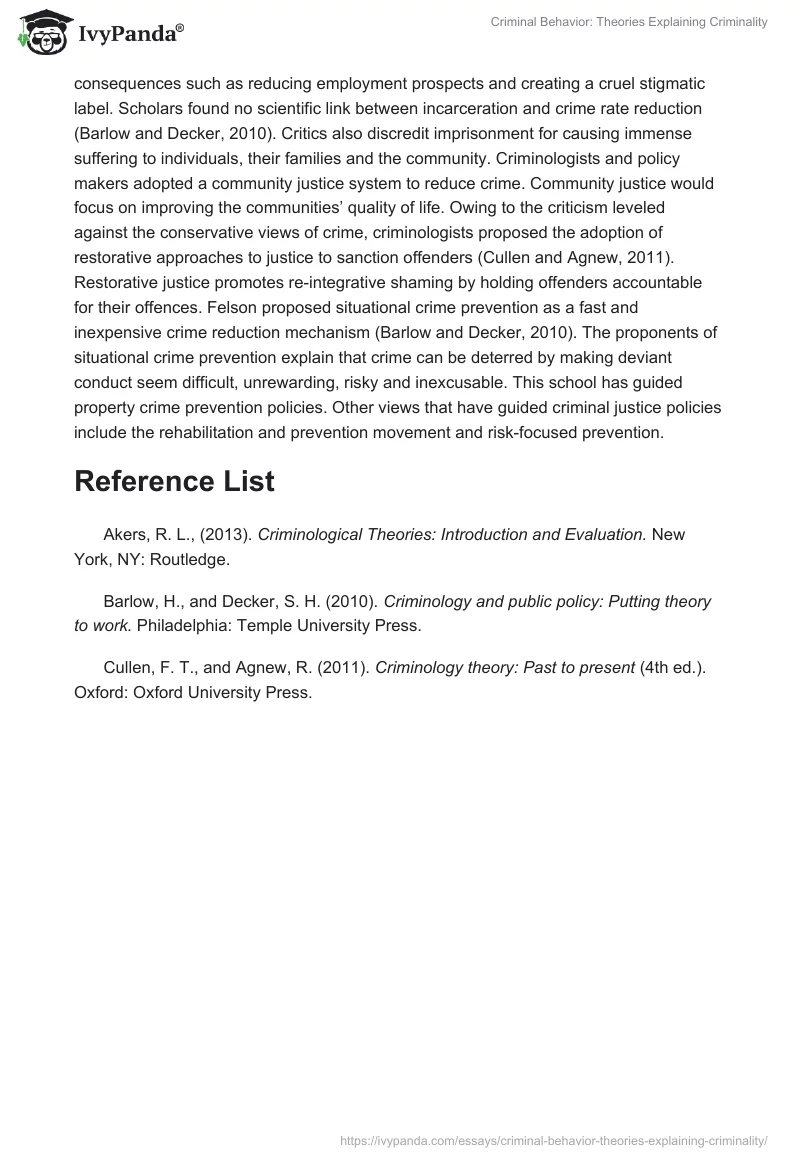Criminologists use theories to explain criminality or explore phenomena that arise in society’s criminal justice system. The role of criminological theory in providing useful cues for appropriate criminal and social justice practice and policy can hardly be underestimated. Each criminological theory alludes to a policy or a therapy. Scholars and practitioners in criminology believe that if a theory explains criminality, it is suitable to guide endeavors to address the problem (Akers, 2013).
Indeed, criminal justice practitioners base every therapy, police policy, prison regimen, treatment program, or criminal justice approach on some description of human nature or criminal behavior. This essay explores the role of various criminological perspectives in developing criminal justice policy. The interactional theory of crime has three fundamental premises: life course perspective, bidirectional causality, and the effect of social structural pressures. Interactional views explain that the factors behind delinquency vary with a person’s developmental stage. The theory assumes that previous states and behaviors have significant developmental consequences. Interactional theorists explain that behavior patterns develop out of interaction with surroundings. Social structural factors also determine an individual’s life course trajectories (Cullen and Agnew, 2011).
In the 1970s, criminal justice policymakers championed the get-tough approach to crime control. Policymakers increased the certainty and cruelty of punishment (Barlow and Decker, 2010). Before 1970, criminal justice policymakers were guided by a philosophy of rehabilitation. Unfortunately, the philosophy came under immense criticism from scholars and politicians. Conservative policymakers and criminologists hold that crime can only be reduced through increased crime (Cullen and Agnew, 2011). They hold that deviance is a deliberate option made on the belief that crime pays. In addition, conservatives propose that increased certainty and harshness of punishment would deter deviants from committing more crimes and prevent potential offenders from joining criminal activities.
In the 1970s, legislators passed laws to increase the severity and certainty of punishment as a result of the conservative views on crime (Barlow and Decker, 2010). With time, the tough approach to crime came under severe attack from criminologists and human rights activists. Criminologists found imprisonment to be inadequate in crime prevention. In addition, scholars argued that it had negative consequences, such as reducing employment prospects and creating a cruel stigmatic label. Scholars found no scientific link between incarceration and crime rate reduction (Barlow and Decker, 2010). Critics also discredit imprisonment for causing immense suffering to individuals, their families, and the community. Criminologists and policymakers adopted a community justice system to reduce crime. Community justice would focus on improving the communities’ quality of life.
Owing to the criticism leveled against the conservative views of crime, criminologists proposed the adoption of restorative approaches to justice to sanction offenders (Cullen and Agnew, 2011). Restorative justice promotes re-integrative shaming by holding offenders accountable for their offenses. Felson proposed situational crime prevention as a fast and inexpensive crime reduction mechanism (Barlow and Decker, 2010). The proponents of situational crime prevention explain that crime can be deterred by making deviant conduct seem difficult, unrewarding, risky and inexcusable. This school has guided property crime prevention policies. Other views that have guided criminal justice policies include the rehabilitation and prevention movement and risk-focused prevention.
Reference List
Akers, R. L., (2013). Criminological Theories: Introduction and Evaluation. New York, NY: Routledge.
Barlow, H., and Decker, S. H. (2010). Criminology and public policy: Putting theory to work. Philadelphia: Temple University Press.
Cullen, F. T., and Agnew, R. (2011). Criminology theory: Past to present (4th ed.). Oxford: Oxford University Press.


